Cherry Blossoms in Okinawa
Okinawa sees the earliest blooming cherry blossoms in all Japan, and offers great sightseeing opportunities in spring
The arrival of cherry blossoms is the highlight of the Japanese year. Young and old celebrate the fleeting beauty of these delicate flowers. Okinawa has a subtropical climate, which means it is the first place in Japan to enjoy the festivities. From mid-January to mid-February, dark pink blossoms bring joy to Okinawa’s islands.
Not all cherry trees are alike
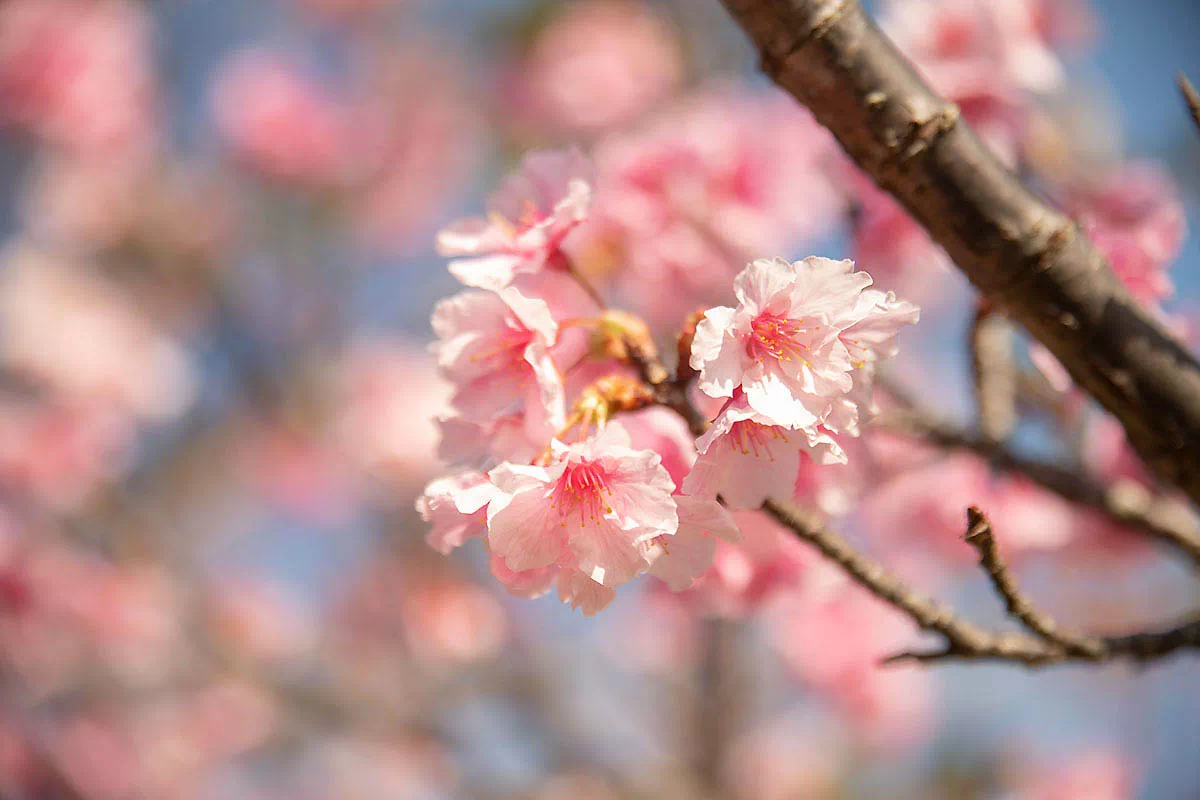
In Okinawa, the cherry trees not only bloom earlier than in mainland Japan, but the flowers are quite different. The most common Japanese cherry trees are the Yoshino cherry (Somei-Yoshino) and the hill cherry (yamazakura). Both trees produce delicate blossoms that are pale pink, almost white. The most common variety of cherry tree in Okinawa is the hikanzakura, also known as the Ryukyu kanhizakura. Okinawa’s cherry blossoms have a bell shape and hang down from the tree. The petals are dark pink compared to the almost white petals of the Yoshino cherry.
The cherry trees also differ in how they finish blooming. The flowers of the Yoshino cherry lose their petals one by one, sometimes creating clouds of white petals after a strong breeze, while the dark pink flowers of the hikanzakura fall intact to the ground.
Cherry blossom viewing, known as hanami, is extremely popular in Japan. It is a chance for families, friends, or couples to spend time enjoying life’s simple pleasures. Okinawa’s main island has many great locations for cherry blossom viewing, and several of the most popular spots are located in northern Okinawa.
In Naha City, you can see the riverside cherry blossoms in Yogi Park. This is a great option if you are based down south and have limited time. Another southern option is Yaese Park, which has around 500 cherry trees.
Admire the blossoms at Nakijin Castle Site
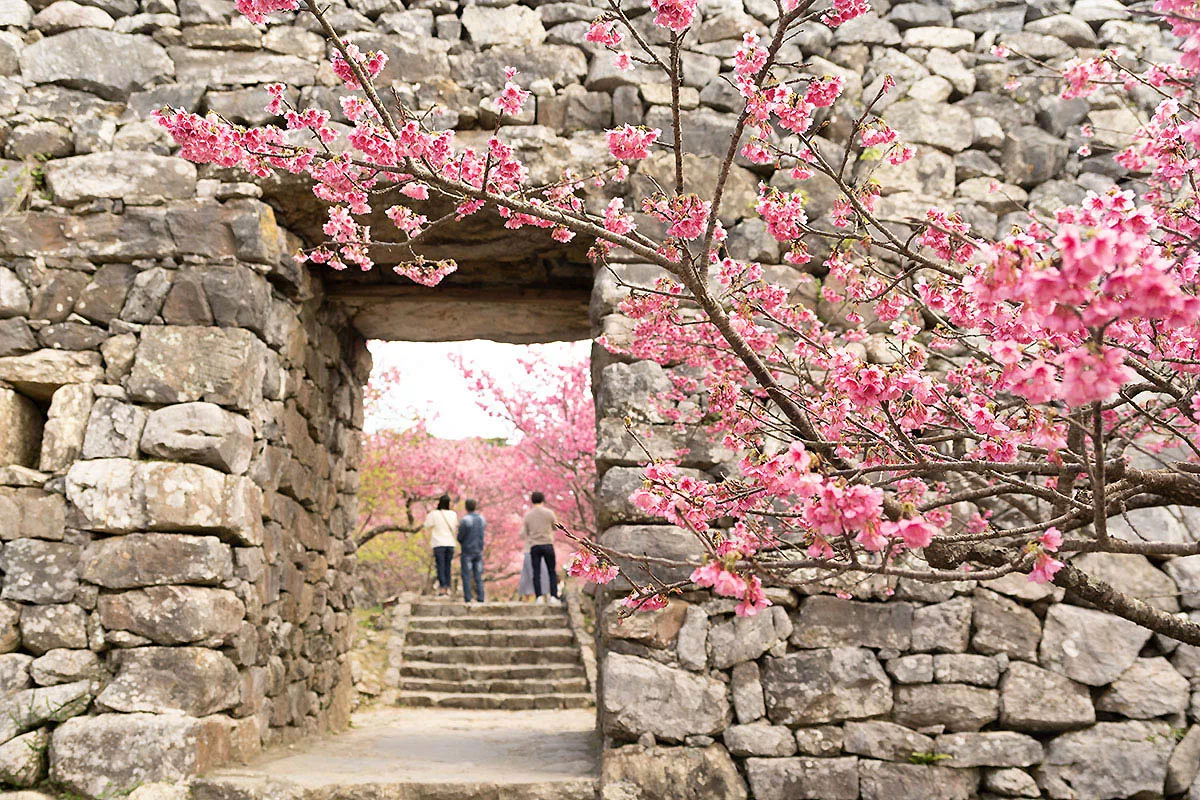
The best option for cherry blossom viewing if you’re also interested in island history is to drive north to Nago City, then west along the Motobu peninsula to the Nakijin Castle Site.
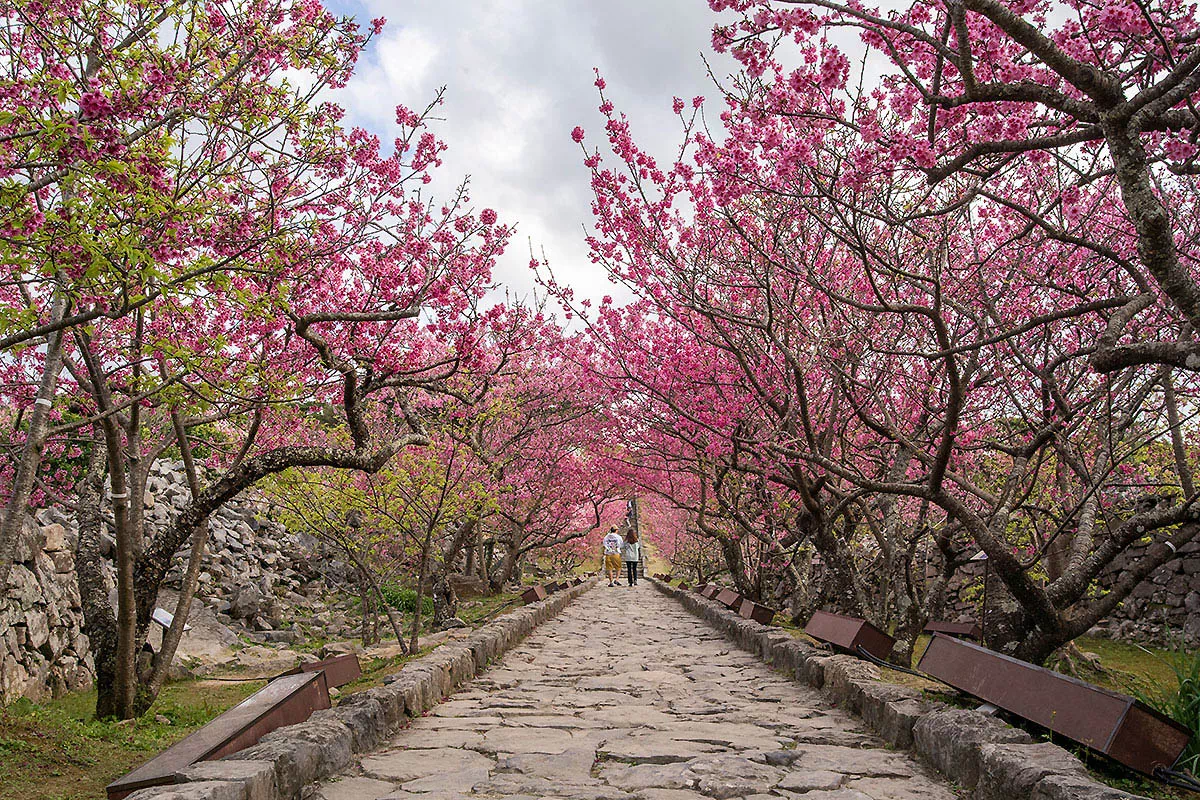
Nakijin Castle was built in the 13th century as the fortress of the northern principality. Constructed of grey Ryukyu limestone, the ruins sit on a hillside looking out over lush green forests, and the azure East China Sea. In 2000, the Nakijin Castle Site was listed with several other important sites as a UNESCO World Heritage Site. The Gusuku Sites and Related Properties of the Kingdom of Ryukyu are globally important examples of Okinawa’s Ryukyu heritage and culture.
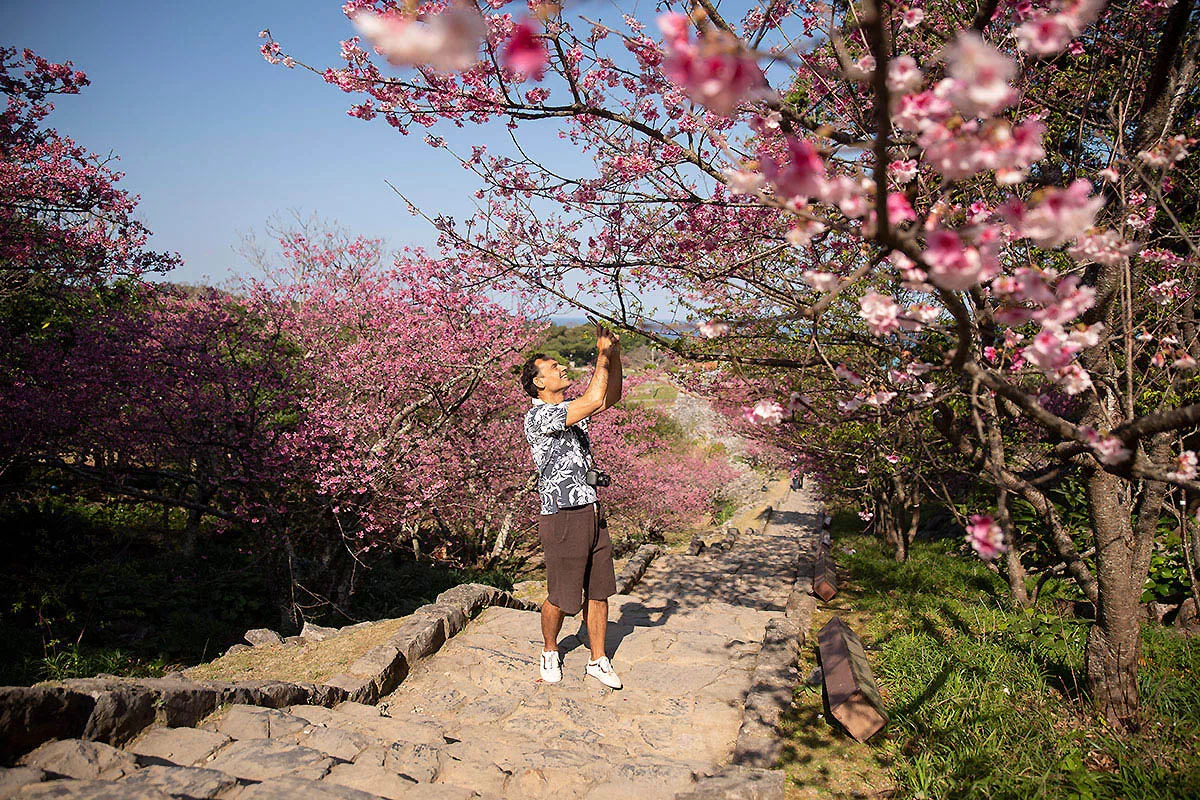
The castle is impressive to visit at any time of the year, but from mid-January to mid-February the stone walls and grounds are dotted with pink blossoms. Cherry trees line the roads as you approach the castle. They are also found throughout the castle grounds, and most impressively, arching cherry trees line either side of the stone staircase within the castle itself. This is one of the prettiest places to take photos of the cherry blossoms. It is easy to create perfect shots of blossoms using the castle walls, blue skies, and ocean as a backdrop. If you’re patient, you’ll see that the flowers are also popular with the local wildlife. The olive green Japanese white eye is particularly fond of cherry blossom nectar, as are the local bees and butterflies. If you are still gazing upwards at dusk, look out for fruit bats, which can occasionally be seen nibbling on the blossoms.
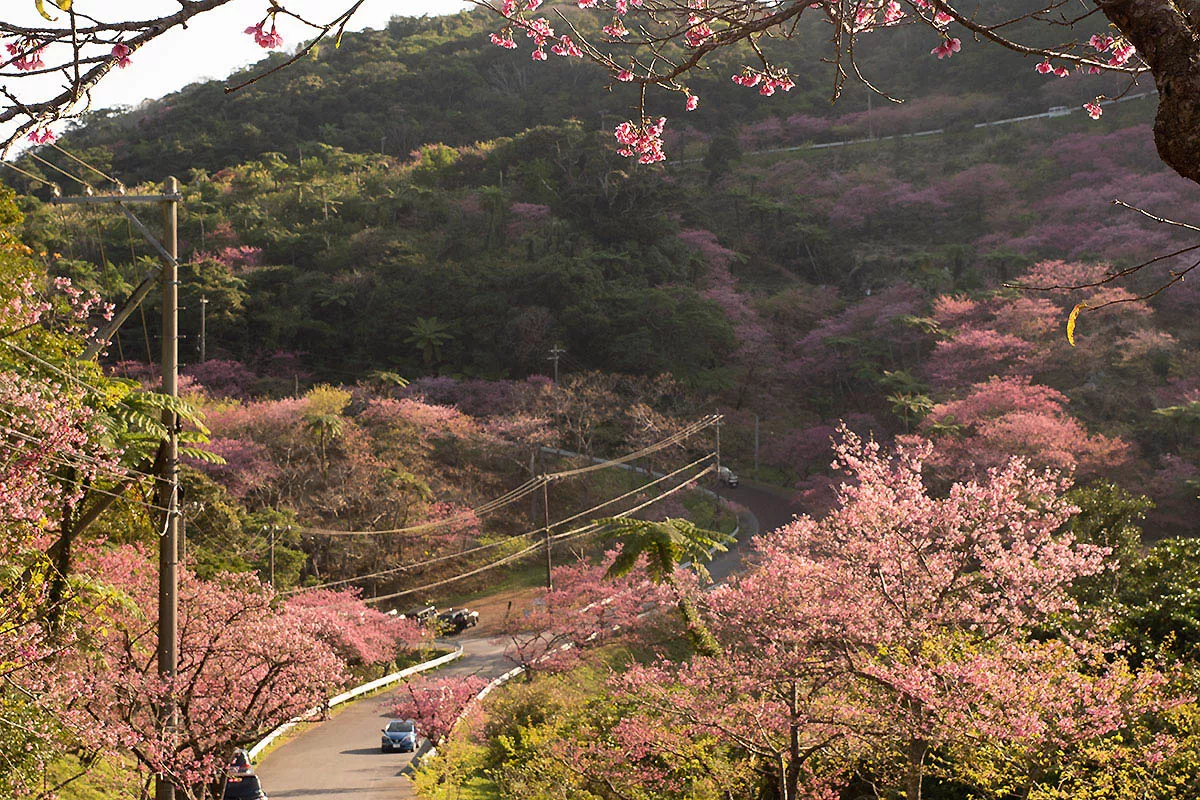
From the ruins of Nakijin Castle, head east to the hills at the heart of the Motobu Peninsula. The roads leading up to Mt. Yae, known locally as Yaedake, are lined with more than 7000 cherry trees. The scenic drive to the 453-meter peak during cherry blossom season is one of Okinawa’s most beautiful. There are a few spots to park your car on the side of the road on the way up Mt. Yae, but it is easier and safer to use one of the large car parks, which are located halfway up the mountain, and near the summit. The halfway point also has the fantastic Yaedake Sakuranomori Park, with a playground perfect for young children, and areas for families to picnic. If you’re interested in karate history, you’ll also find a statue of the grandmaster Kanbun Uechi looking out over the festivities.
Top tips
● Cherry blossoms usually bloom in Okinawa around mid-January to mid-February. If December is unusually warm or cold, it can cause the buds to bloom earlier or later than expected.
● Early February is also harvest time for Okinawan oranges (tankan), and there are groves offering pick-your-own experiences in the Mt. Yae area.
● If you are driving up to Mt. Yae on a weekend during cherry blossom season, be patient, as the roads get busy. If possible, try to visit on a weekday. Another great option is to stay the night locally so you can enjoy the blossoms early in the morning before the crowds arrive.
● If you are taking photos on the road up to Mt. Yae, remember to be aware of your surroundings and vehicles. Do not step back into traffic.
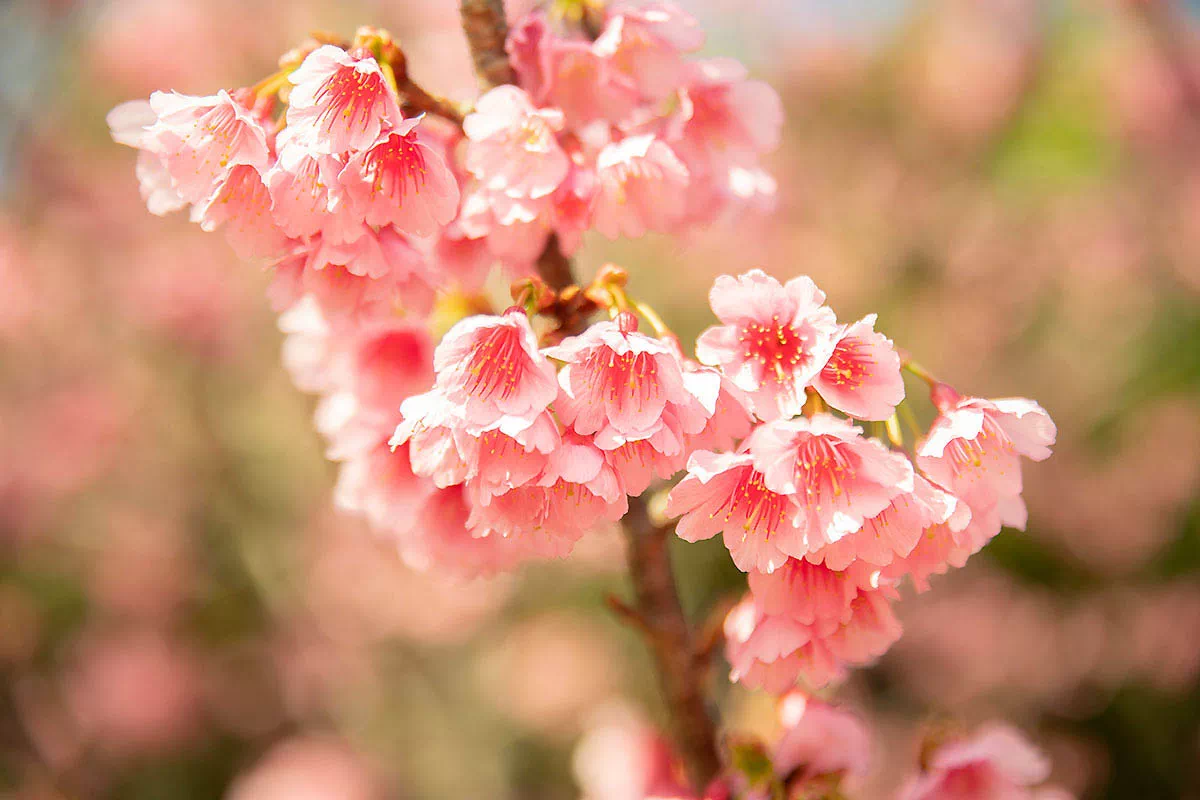
Learn More
- Nakijin Castle Ruins *only in Japanese





















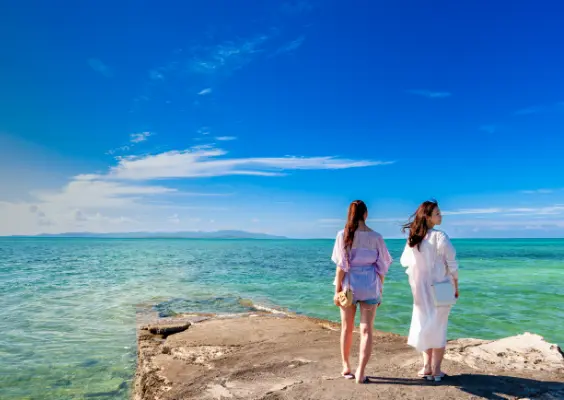
 Facebook
Facebook Twitter
Twitter Copy URL
Copy URL


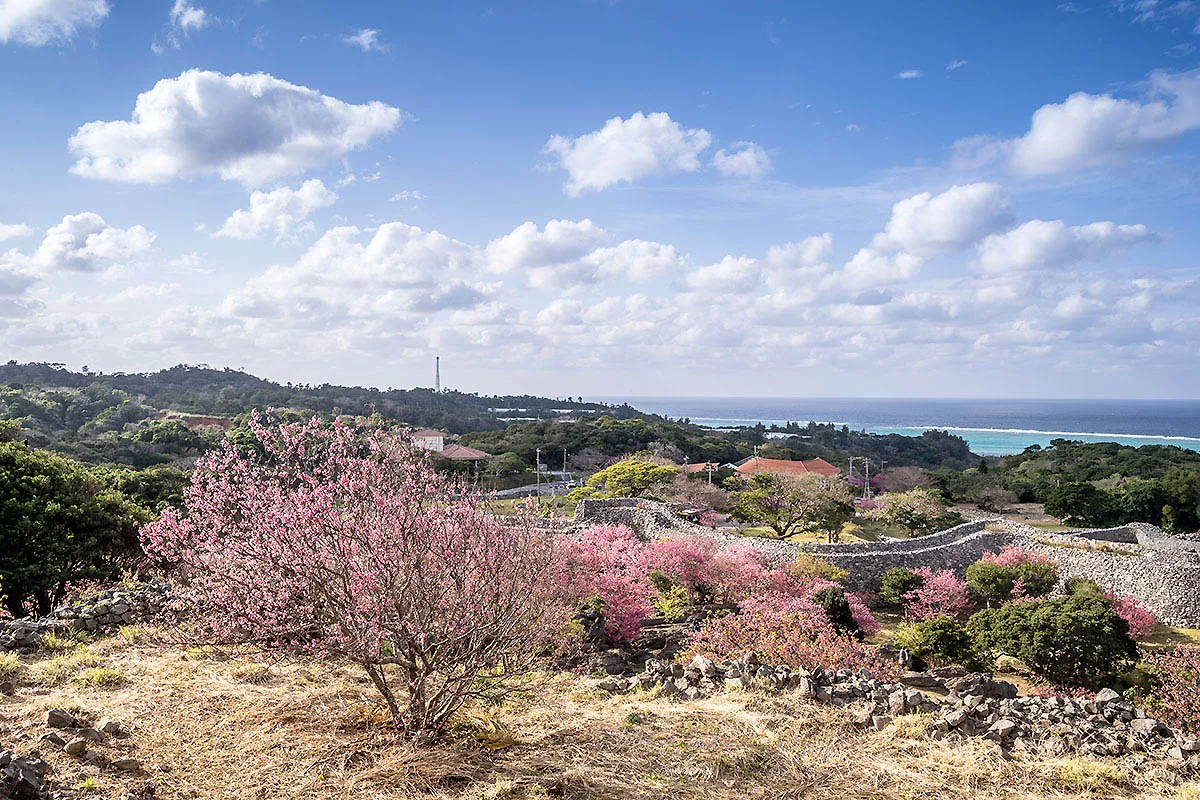
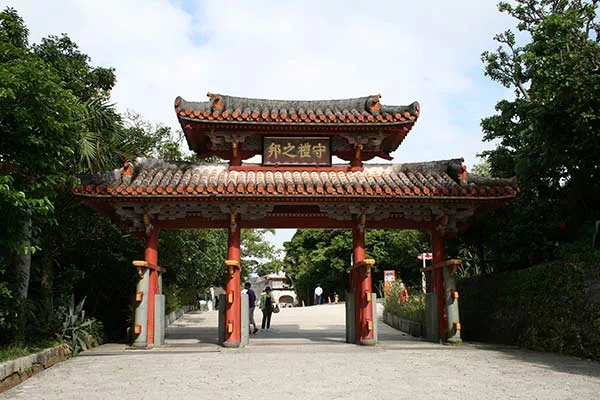
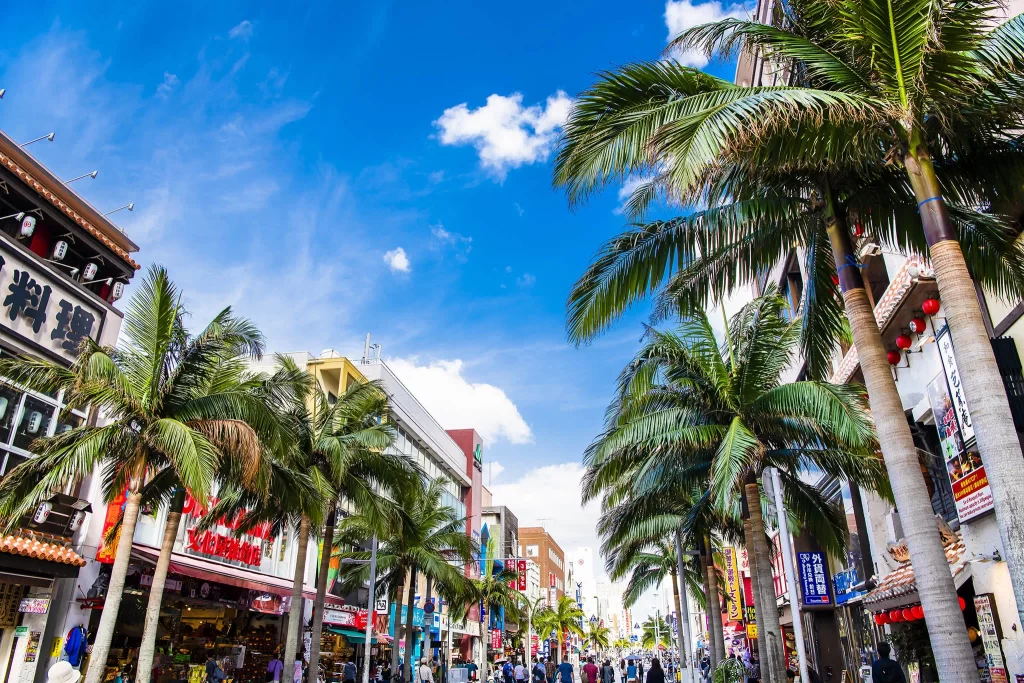
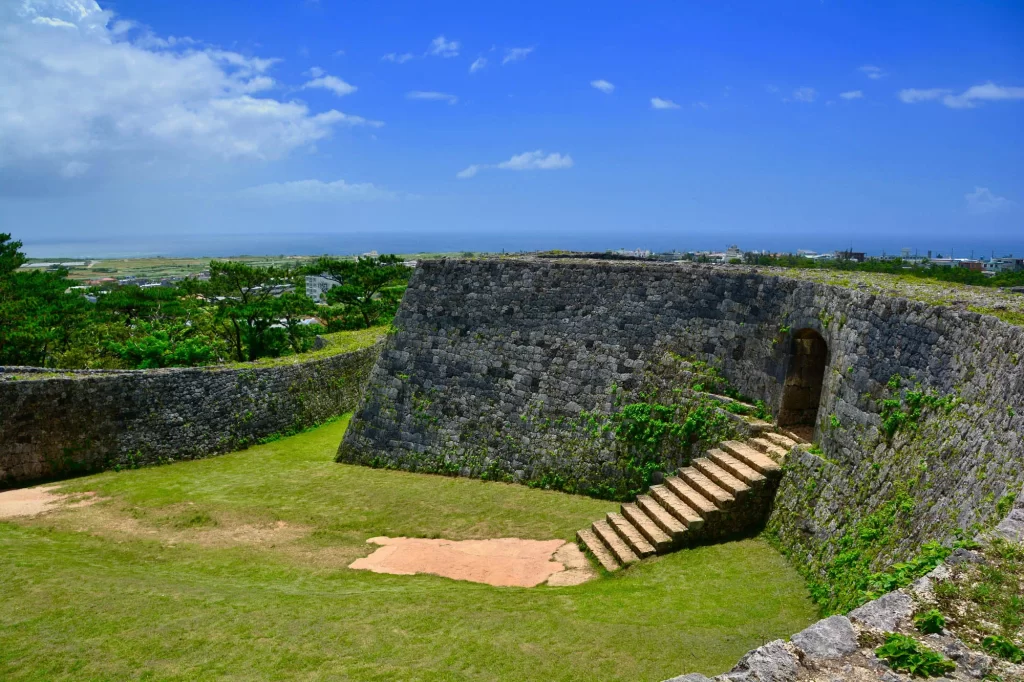
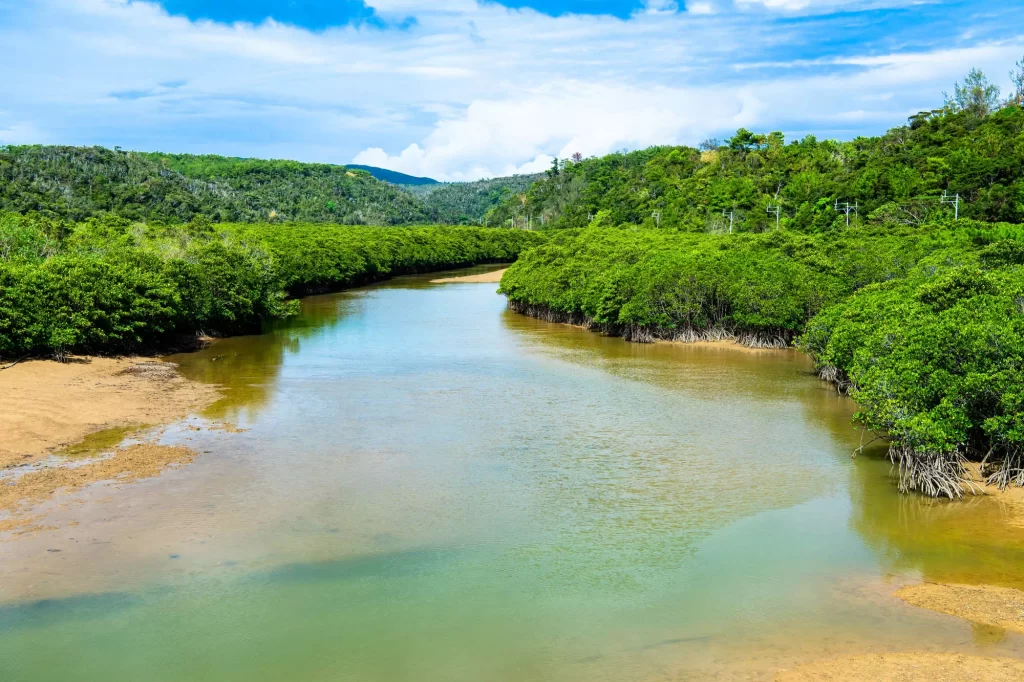
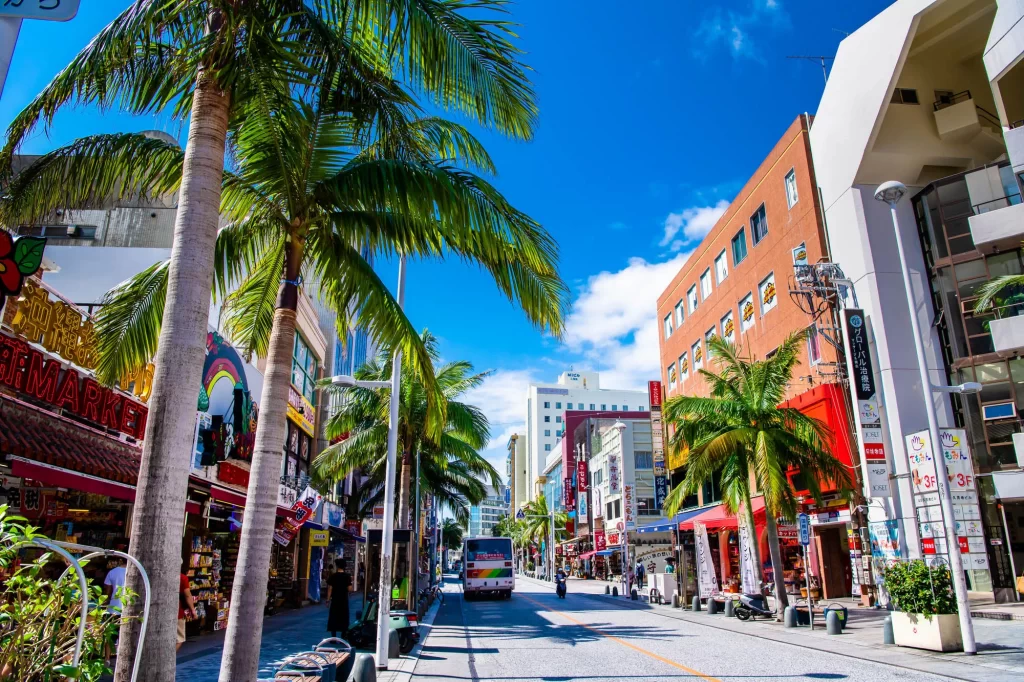
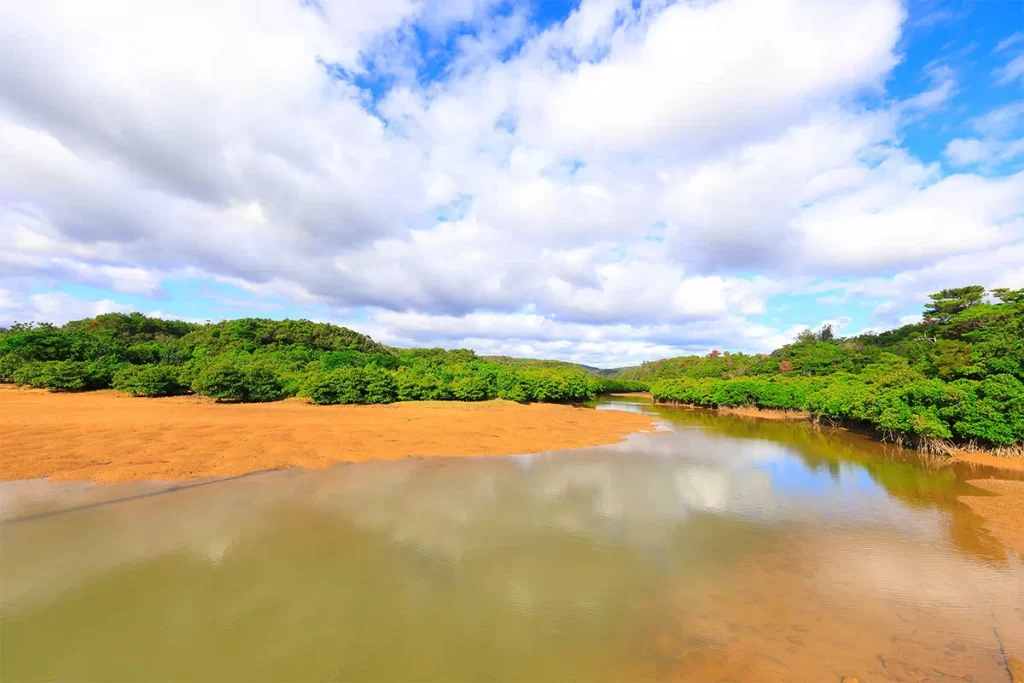
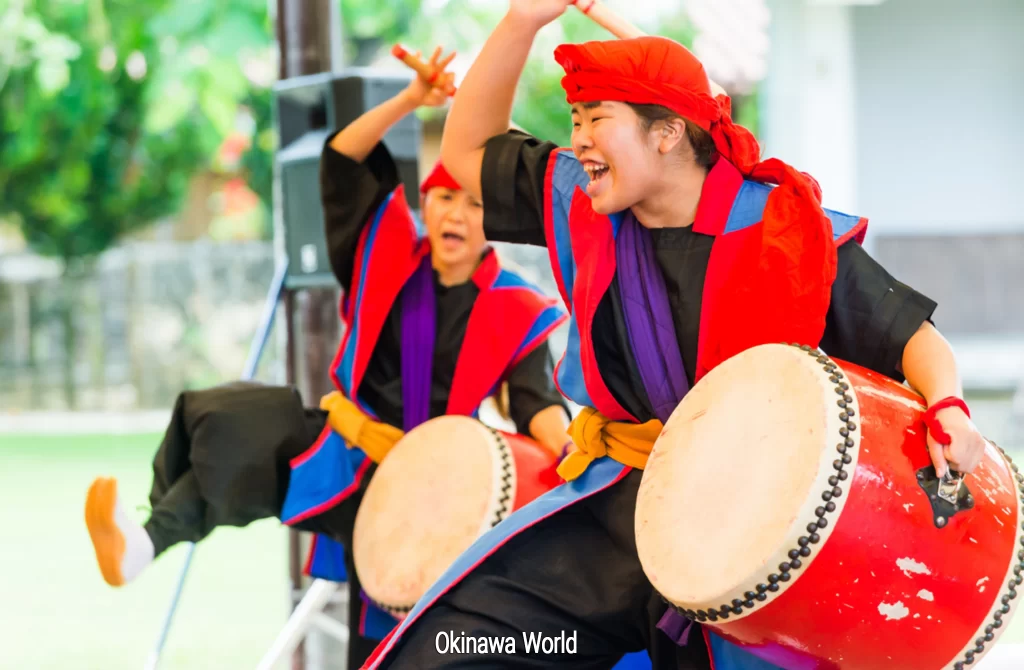

Last updated 2021/12/20
Text by Chris Willson
Chris Willson is a British photographer, videographer, and travel writer based in Okinawa for over 20 years.